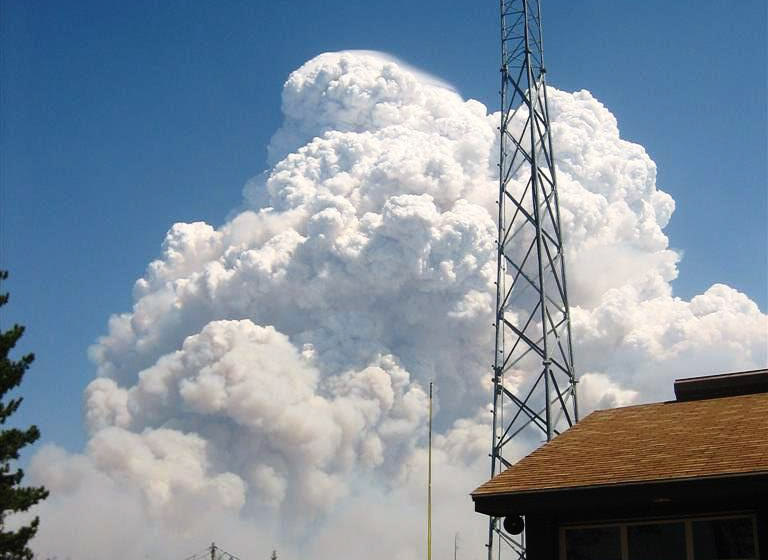Ten years ago today an ember blew out of a fire a camper left at Ham Lake in northeast Minnesota and started a blaze that burned 75,000 acres in the Superior National Forest, the Boundary Waters Canoe Area, and Ontario’s Quetico Provincial Park across the Canadian border. A year later Stephen Posniak, the man indicted as being responsible for the fire, died of a self-inflicted gunshot wound at his home. The suicide came a day after a federal magistrate denied motions challenging key aspects of the charges filed.
Below is an article about the fire released by the Minnesota Interagency Fire Center. All of these photos of the Ham Lake Fire are from their archives.
****
Recollections: Tenth anniversary of the Ham Lake Fire
Ten years ago on May 5 Ham Lake residents in northeastern Minnesota watched embers from a small campfire rage into a 75,000-acre inferno destroying structures, costing about $10 million and burning more than 25-square miles. In a recent Minnesota Public Radio interview residents called it the “devil fire” because it blew quickly out of control due to erratic winds and unusual tinder dry conditions. The fire, one of Minnesota’s largest, originated along a 60-mile, two-lane, dead-end road surrounded by the Boundary Canoe Area Wilderness, the Superior National Forest and eventually across the Canadian border.
“We didn’t expect that type of fire activity at that time of year. Often there is still snowpack,” said Tom Lynch, an initial attack responder and 30-year wildland firefighter. “When we got the call most of us were in our civilian clothes. We grabbed what we could and hurried up there,” said Lynch, who recalls prioritizing kayak and canoe removal in the midst of structure protection decisions.
Strong, ever-changing winds caused rapid, unpredictable growth of the fire. A 30,000-foot smoke plume was visible from hundreds of surrounding cabins, businesses, camps and residences. In the end, about 133 structures, an outfitting business and 61 residences were destroyed. It could have been worse. There were no fatalities.
“The Ham Lake Fire was human-caused and ignited near the Gunflint Trail area of the Superior National Forest,” said Kris Reichenbach, U.S. Forest Service public affairs officer. “The fire spread quickly in areas of extreme fuel loading with dead and downed timber.”
Heavy fuels resulted from a severe 90-mph windstorm in 1999 that downed nearly 500,000 acres of forested land. Seven years later, the lightning-ignited Cavity Lake Fire burned more than 31,500 acres directly west of the 2007 Ham Lake Fire area. A Superior National Forest report indicated that “when the fire reached large prescribed fire treated areas, it was extinguished and became readily suppressed with direct attack. Treatments were concentrated to the west of the Gunflint Trail wildland-urban interface area, resulting in stopping the fire’s progression toward homes.”
At one time during the weeklong incident, more than 1,000 U.S., Canadian and Minnesota Incident Command System (MNICS) personnel joined forces. The Gunflint Volunteer Fire Department was instrumental in the initial attack phase. Nearly two dozen Minnesota fire departments were involved as unified command came together.
Aside from the magnitude and intensity of the Ham Lake Fire, it became a lessons learned instructional aid. More than 100 homeowners along the Gunflint Trail installed sprinkler systems after the 1999 blow down due to increased fire danger. Estimates are that the sprinklers saved at least 50 structures.
“The big thing that stood out was that it was a super demonstration of proactively planning, preparing and practicing,” said Daria Day, a lead public information officer who was first on the fire. The implementation of those sprinklers saved a lot of structures. It was a very good example of community preparedness and wildfire prevention.”




